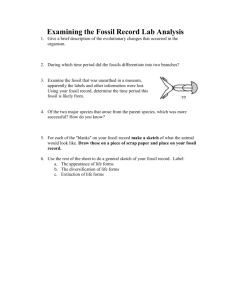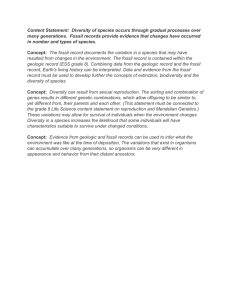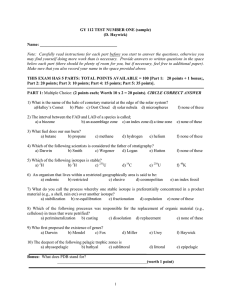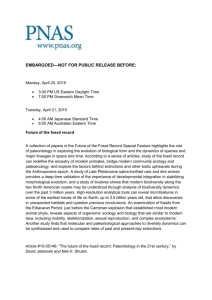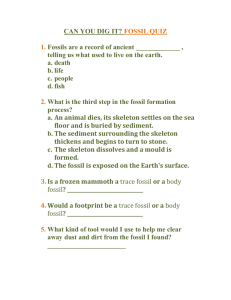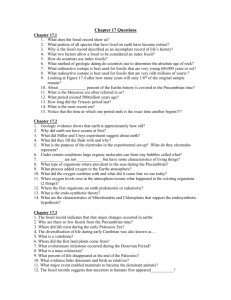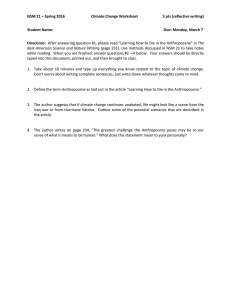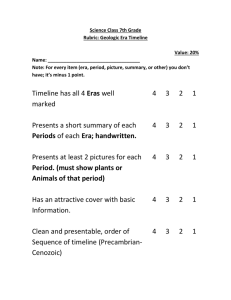firstdayhandouttragicecologiesundergrad
advertisement
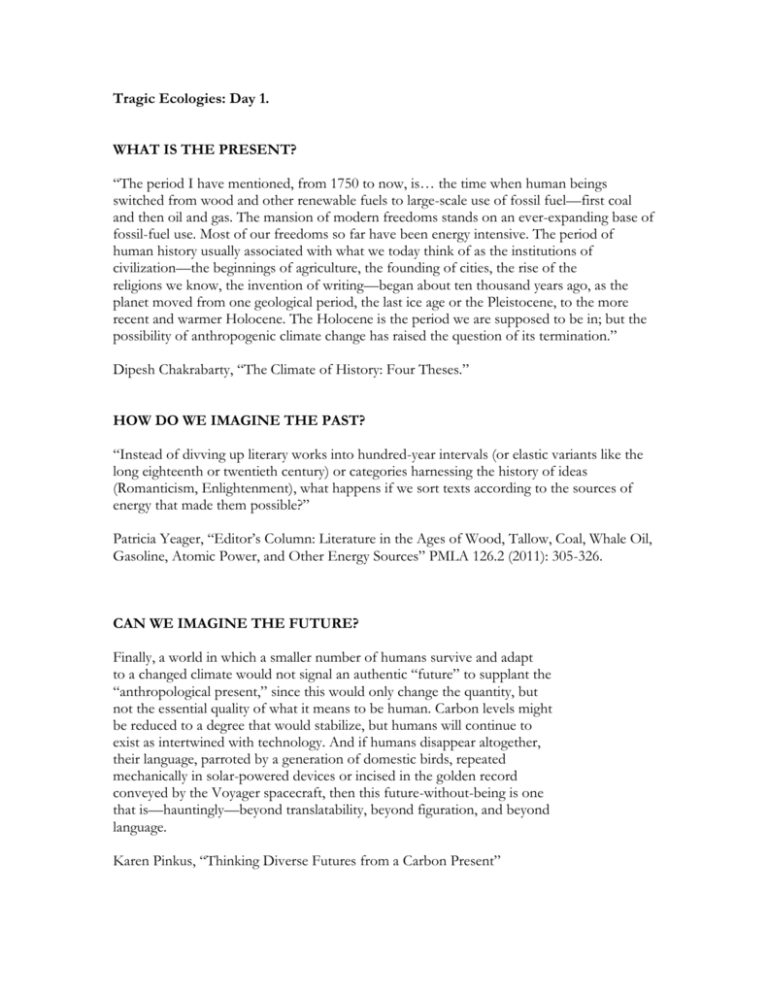
Tragic Ecologies: Day 1. WHAT IS THE PRESENT? “The period I have mentioned, from 1750 to now, is… the time when human beings switched from wood and other renewable fuels to large-scale use of fossil fuel—first coal and then oil and gas. The mansion of modern freedoms stands on an ever-expanding base of fossil-fuel use. Most of our freedoms so far have been energy intensive. The period of human history usually associated with what we today think of as the institutions of civilization—the beginnings of agriculture, the founding of cities, the rise of the religions we know, the invention of writing—began about ten thousand years ago, as the planet moved from one geological period, the last ice age or the Pleistocene, to the more recent and warmer Holocene. The Holocene is the period we are supposed to be in; but the possibility of anthropogenic climate change has raised the question of its termination.” Dipesh Chakrabarty, “The Climate of History: Four Theses.” HOW DO WE IMAGINE THE PAST? “Instead of divving up literary works into hundred-year intervals (or elastic variants like the long eighteenth or twentieth century) or categories harnessing the history of ideas (Romanticism, Enlightenment), what happens if we sort texts according to the sources of energy that made them possible?” Patricia Yeager, “Editor’s Column: Literature in the Ages of Wood, Tallow, Coal, Whale Oil, Gasoline, Atomic Power, and Other Energy Sources” PMLA 126.2 (2011): 305-326. CAN WE IMAGINE THE FUTURE? Finally, a world in which a smaller number of humans survive and adapt to a changed climate would not signal an authentic “future” to supplant the “anthropological present,” since this would only change the quantity, but not the essential quality of what it means to be human. Carbon levels might be reduced to a degree that would stabilize, but humans will continue to exist as intertwined with technology. And if humans disappear altogether, their language, parroted by a generation of domestic birds, repeated mechanically in solar-powered devices or incised in the golden record conveyed by the Voyager spacecraft, then this future-without-being is one that is—hauntingly—beyond translatability, beyond figuration, and beyond language. Karen Pinkus, “Thinking Diverse Futures from a Carbon Present” Evidence we’ve started an ‘Anthropocene’ We’ve pushed extinction rates of flora and fauna far above the long-term average. The Earth is now on course for a sixth mass extinction which would see 75% of species extinct in the next few centuries if current trends continue Increased the concentrations of CO2 in the atmosphere by about 120 parts per million since the industrial revolution because of fossil fuel-burning, leaving concentrations today at around 400ppm and rising Nuclear weapon tests in the 1950s and 60s left traces of an isotope common in nature, 14C, and a naturally rare isotope, 293Pu, through the Earth’s mid-latitudes Put so much plastic in our waterways and oceans that microplastic particles are now virtually ubiquitous, and plastics will likely leave identifiable fossil records for future generations to discover Doubled the nitrogen and phosphorous in our soils in the past century with our fertiliser use. According to some research, we’ve had the largest impact on the nitrogen cycle in 2.5bn years Left a permanent marker in sediment and glacial ice with airborne particulates such as black carbon from fossil fuel-burning “Human Impact has Pushed Earth into the Anthropocene, Scientists Say.” Guardian 7 January 2016. http://www.theguardian.com/environment/2016/jan/07/human-impact-haspushed-earth-into-the-anthropocene-scientists-say. Web.


